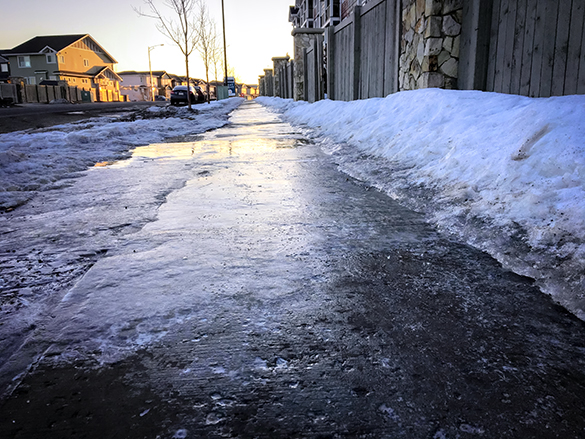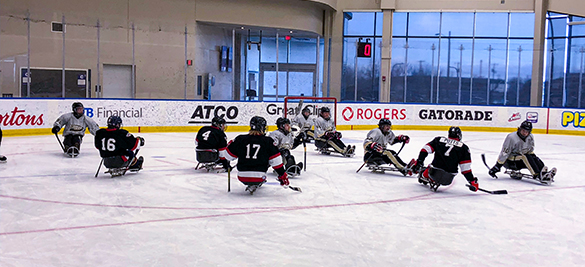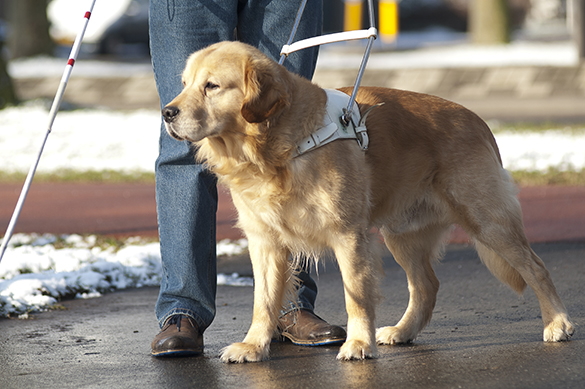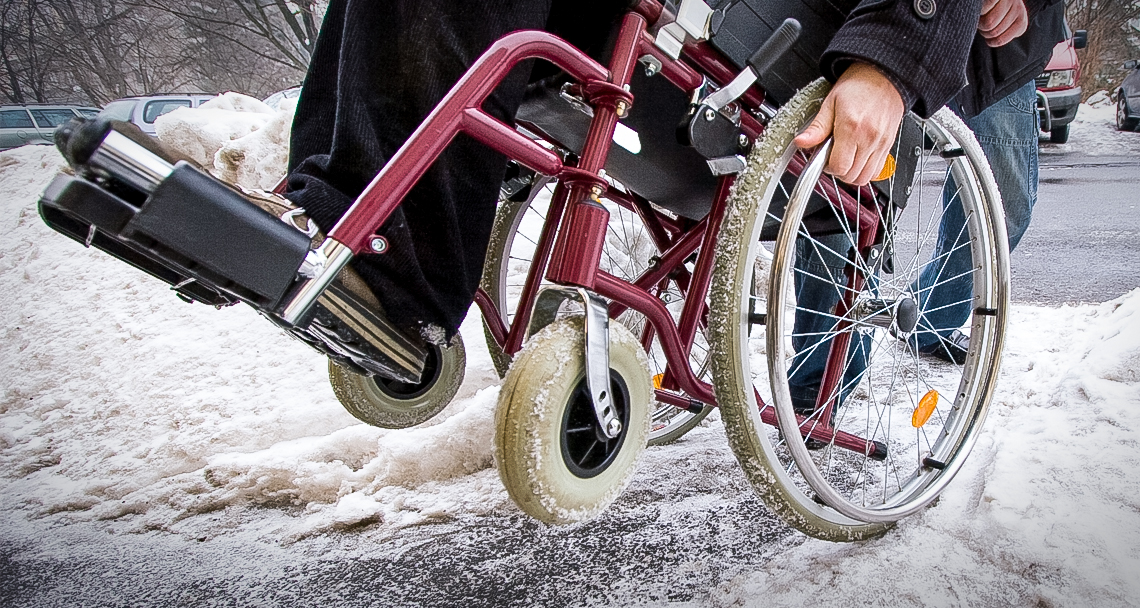“I love that the city has the winter festivals. I love the winter patios, but if I am speaking honestly, my favourite part of winter is the end!”
A lot of us can identify with Tonia LaRiviere’s feelings about winter. As Chair of the Accessibility Advisory Committee, and someone with accessibility challenges herself, most of the time, winter is no sleigh ride. Instead, this time of year is far more like an obstacle course filled with tons of possibilities for injury.

For all of us, dealing with snowfall and lingering ice is a battle, but for those with disabilities, the struggle to leave the house in the winter months is an even more challenging one. Tonia notes that for people with disabilities, winter causes safety concerns that makes being independent very difficult. “[A person] in a wheelchair can still do some things, but they have to have somebody with them. They need someone to push their chair out of the snow or somebody to guide them. For my friend who is blind, I would guide him, and it would be ‘ok, going up, going down, bumps, ruts, icy’ so when you’re on your own, that is difficult to navigate,” Tonia says.
It’s Tonia’s role, along with the rest of the Accessibility Advisory Committee, to help the City of Edmonton navigate policies that create a more inclusive city for everyone. Indeed, in 2019, the City passed a new policy that goes much further to ensure all people with disabilities have equitable access. “It is still fairly new and it feels somewhat aspirational,” Tonia says with a wry grin. “We would like to see it have a bit of a stronger footprint. Of course this is going to take a bit of time, but the Committee is anxious to see it put into action.”
For some folks with disabilities, there is a silver lining in the winter clouds, a newfound love for adaptive sports. Tyler MacPhee, a sledge hockey goalie with the Edmonton Adaptive Sports Association’s hockey team, the EASA Storm, says playing sledge hockey has changed his life. Now winter is his favourite time of year. “I like the social aspect of it, and it also gets me out of the house because if it weren’t for sledge hockey, I probably wouldn’t be doing much. Also, pretty much every year, we get sponsored by the Oilers to go to a tournament in the States, the NHL Sled Classic.”

Nonetheless, there are still challenges. Tyler has freedom now that he can drive himself to practice, but he says that wasn’t the case when he used to take Dedicated Accessible Transit Service (DATS). “Before I was able to drive, getting around the city was a nightmare. I would have to book DATS, and it would seem like they were always late, and when you take DATS, you’re not allowed to bring the hockey bag on,” says Tyler. The team also finds it difficult to get ice time, and sometimes the ice times are so late that Tyler can’t go. These systemic issues reflect that we, as a community, still have a long way to go.
Indeed, in order to be a great winter city, our outdoor spaces need to be more accessible to everyone. Rundle Park’s IceWay is, for example, wheelchair accessible and we’d like to see more City and community rinks follow suit. And with accessible spaces, comes accessible programming as well. There are some opportunities out there for people with physical disabilities to take part in winter sports, like para-nordic cross-country skiing at the Strathcona Wilderness Center and adaptive alpine skiing and snowboarding through Canadian Adaptive Snowsports. We’d love to see these kinds of programs expand, especially based on need and consultation with accessibility advocates.
As Marla Smith (@servicerotties) shares in her tweet, it’s essential to consider accessibility as a holistic feature. It’s great to have accessible ice surfaces, but in order to make them truly functional for people with disabilities, the entire pathway to them also needs to be fully accessible.
And on that matter, there is agreement from those who work in accessibility-related areas at the City. “We want Edmonton to be accessible for everyone. That is the dream,” says Yogi Subramonian, a project architect with the City’s Facility Planning and Design. So, the City is working to change how we look at accessibility and ensure they build all new infrastructure with accessibility in mind. (Find out about the City’s Accessibility for People with Disabilities Policy here.) They also started auditing older infrastructure and are identifying the improvements they need to make, and prioritizing buildings they need to upgrade. Edmonton’s 311 now offers an option for accessibility issues so that is reflected in the data they collect, making it a great way to have your voice heard. Similarly, the City is re-evaluating its Snow and Ice policy, which will hopefully lead to more accessible winter streets and sidewalks as well.

A winter city with equitable accessibility for everyone is something we should all champion because, as Tonia reminds us, we will all face accessibility challenges at some point in our lives. These challenges can come from a temporary injury, permanent disability, or aging. There is hope, but it will take all of the Edmonton community to come together and change our mindset.
As Tonia says, “If we are truly going to be an inclusive city that can be enjoyed by all equally and safely, we need to start thinking of accessibility in every way and build more intentionally.”
